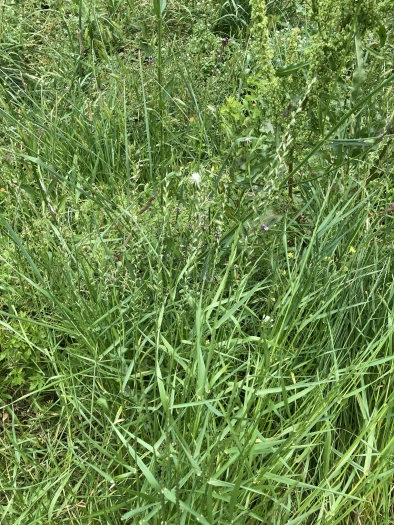Darnel
(Lolium temulentum)
Darnel (Lolium temulentum)
/
/

© Thomas Mesaglio
CC BY 4.0
Image By:
© Thomas Mesaglio
Recorded By:
Copyright:
CC BY 4.0
Copyright Notice:
Photo by: © Thomas Mesaglio | License Type: CC BY 4.0 | License URL: http://creativecommons.org/licenses/by/4.0/ | Uploader: thebeachcomber | Publisher: iNaturalist |























Estimated Native Range
Summary
Lolium temulentum, commonly known as darnel or poison darnel, is an annual grass that is often considered a weed in cereal crops and is native to the Mediterranean region. It typically grows up to 3 feet tall and closely resembles wheat until it produces its ear, which bears a superficial similarity to wheat but is distinguishable upon closer inspection. Darnel usually has a more slender form and a less robust ear than wheat. The plant flowers in the summer, and its flowers are not particularly showy, being typical of grass species. Darnel is known for its association with endophytic fungi that produce loline alkaloids, making the plant toxic and capable of causing symptoms such as dizziness and nausea if ingested.
Darnel is not typically cultivated due to its toxic nature and its ability to compete with crops such as wheat. It is often found in wheat fields, where it can be problematic for farmers. In cultivation, it requires similar conditions to wheat, thriving in full sun and well-drained soils. However, due to its toxicity and invasive potential, it is not recommended for planting in gardens or agricultural areas outside its native range. Gardeners should be aware of its potential to spread and its ability to contaminate cereal grains.CC BY-SA 4.0
Darnel is not typically cultivated due to its toxic nature and its ability to compete with crops such as wheat. It is often found in wheat fields, where it can be problematic for farmers. In cultivation, it requires similar conditions to wheat, thriving in full sun and well-drained soils. However, due to its toxicity and invasive potential, it is not recommended for planting in gardens or agricultural areas outside its native range. Gardeners should be aware of its potential to spread and its ability to contaminate cereal grains.CC BY-SA 4.0
Plant Description
- Plant Type: Grass
- Height: 1-3 feet
- Width: 1-2 feet
- Growth Rate: Rapid
- Flower Color: N/A
- Flowering Season: Summer
- Leaf Retention:
Growth Requirements
- Sun: Full Sun
- Water: Medium
- Drainage: Medium, Fast
Common Uses
Erosion Control, Low Maintenance
Natural Habitat
Native to the Mediterranean region
Other Names
Common Names: Darnel, Bearded Ryegrass, Darnel Drake, Darnel Ryegrass, Drake Darnel, Poisonous Darnel, Tare, Drunken Darnel
Scientific Names: , Lolium temulentum, Bromus temulentus, Craepalia temulenta, Festuca temulenta, Loliola pratensis, Lolium aegyptiacum, Lolium aegyptiacum, Lolium album, Lolium annuum
GBIF Accepted Name: